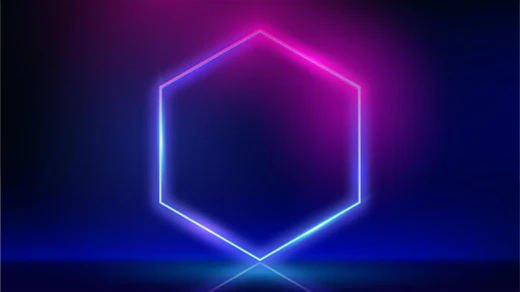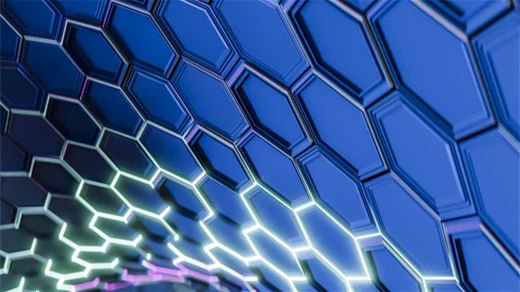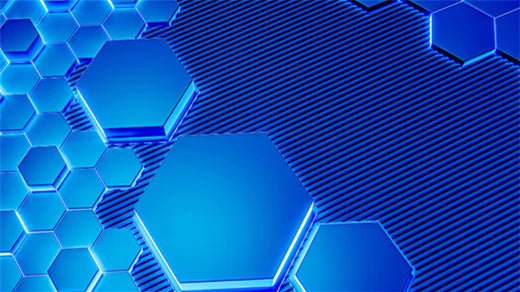Hexagon lights have surged in popularity thanks to their contemporary appeal and versatile functionality. Their geometric design stands out as a modern statement piece in interior decor, capturing the attention of design enthusiasts and architects alike. With innovative features and customizable configurations, hexagon lights have become a go-to choice for those seeking unique and stylish lighting solutions. Is the hexagonal lamp so good? Let's continue reading.
What Is a Hexagon Light?
A hexagon light is a lighting fixture designed in the shape of a hexagon, featuring six sides and a symmetrical geometric design. This unique shape not only serves an aesthetic purpose but also offers versatile functionality in various lighting applications.
Characteristics of Hexagon Lights:
Geometric Design: The most distinctive feature of a hexagonal lamp is its six-sided shape, which creates a modern and visually appealing look. This geometric design can add a contemporary touch to any space.
Modular Structure: Many hexagon lights are designed to be modular, meaning they can be connected to other hexagonal units to form custom configurations. This allows for creative and flexible lighting solutions tailored to specific needs and preferences.
LED Technology: hexagon lights typically use LED (Light Emitting Diode) technology, which provides energy-efficient and long-lasting illumination. LEDs are known for their bright, clear light output and low energy consumption.
Material and Finish: hexagon lights are available in various materials, including plastic, metal, and glass. They come in different finishes such as matte, glossy, or metallic, allowing them to blend seamlessly with different interior design styles.
How Hexagon Lights Work:
Hexagon lights typically operate using LED technology, which involves the following components:
- Solar Panels (for some types): Some hexagon lights, particularly those designed for outdoor use, come with integrated solar panels that capture sunlight and convert it into electrical energy to power the lamp.
- Rechargeable Batteries: These store the electrical energy generated by the solar panels or from an external power source. The stored energy powers the LED lights.
- LED Light Bulbs: LEDs emit light when an electric current passes through them. They are highly efficient and have a long lifespan compared to traditional incandescent bulbs.
- Control Mechanisms: hexagon lights may come with various control options, including physical switches, remote controls, and smart app integration. Some models offer touch-sensitive controls, dimming capabilities, and programmable lighting effects.
Advantages of Hexagon Lights:
Unique Design Statement:
Hexagon lights make a bold and contemporary design statement, adding a touch of modern elegance to any space. Their distinctive geometric shape stands out as a focal point, enhancing the overall aesthetic appeal of the room.
Energy Efficiency and Sustainability:
With the widespread adoption of energy-efficient LED technology, hexagon lights offer eco-friendly illumination options. LED bulbs consume less power, resulting in lower energy bills and reduced environmental impact. Additionally, solar-powered variants harness renewable solar energy, further enhancing sustainability.
Innovative Features and Controls:
Hexagon lights often come equipped with innovative features and controls, such as smart connectivity, touch-sensitive interfaces, and programmable lighting effects. These advanced functionalities enhance user convenience and elevate the lighting experience.
Enhanced Ambiance and Mood Lighting:
Beyond providing illumination, hexagon lights contribute to creating ambiance and setting the mood in a room. They offer a warm and inviting glow that enhances the atmosphere, making spaces feel cozy, welcoming, and visually captivating.
Multi-Functional Applications:
From residential interiors to commercial settings, hexagon lights find applications in a diverse range of environments. Whether used for general lighting, task lighting, accent lighting, or decorative purposes, these versatile fixtures adapt seamlessly to various spaces and requirements.

Longevity and Low Maintenance:
Hexagon lights are built to last, with durable materials and high-quality construction ensuring longevity and reliability. Additionally, the low heat emission of LED bulbs minimizes the risk of overheating and extends the lifespan of the fixtures, resulting in minimal maintenance requirements.
Interior Design Flexibility:
Architects, interior designers, and homeowners appreciate the flexibility that hexagon lights offer in interior design schemes. These fixtures effortlessly integrate into contemporary, minimalist, industrial, and eclectic styles, adding visual interest and enhancing the overall design aesthetic.
Disadvantages of hexagon lights:
While hexagon lights offer many benefits, they also come with some disadvantages. Here are some of the key drawbacks to consider:
Cost:
- Higher Initial Investment: hexagon lights, particularly high-quality and feature-rich models, can be more expensive than traditional lighting options. The cost of purchasing multiple units for creating custom configurations can add up quickly.
- Installation Costs: Depending on the complexity of the installation, especially for interconnected modular setups, there may be additional costs for professional installation.
Installation Complexity:
- Technical Installation: Installing hexagon lights, particularly those that are modular or require precise placement, can be more complex compared to standard light fixtures. This can make DIY installation challenging for some users.
- Time-Consuming Setup: Creating intricate patterns or designs with hexagon lights can be time-consuming, requiring careful planning and alignment.
Compatibility Issues:
- Limited Interchangeability: Hexagonal light panels from different manufacturers may not be compatible with each other. This can limit options for expanding or modifying an existing setup.
- Specific Power Requirements: Some hexagon lights, especially those with advanced features, may require specific power sources or voltage levels, making them less versatile in terms of installation locations.

Durability Concerns:
- Fragile Components: While many hexagon lights are designed to be durable, some models, particularly those with intricate designs or cheaper materials, may be more susceptible to damage if not handled carefully.
- Wear and Tear: Frequent reconfiguration or movement of modular hexagon lights can lead to wear and tear on the connectors and components over time.
Limited Light Coverage:
Focused Illumination: hexagon lights, depending on their design, might provide focused or localized lighting rather than widespread illumination. This can make them less effective for general lighting purposes in large areas.
Maintenance and Repairs:
- Specialized Parts: If a component of a hexagonal light fixture fails, finding replacement parts can be difficult, especially if the product is from a less common manufacturer. Repairs might require specialized knowledge or tools.
- Cleaning Challenges: The geometric design with multiple edges and surfaces can make cleaning more challenging compared to smooth, traditional light fixtures.
Summary:
Hexagon lights have gained popularity due to their unique design, customization options, and modern aesthetic appeal. These lights are versatile, energy-efficient, and can be used in a variety of settings to enhance the ambiance and visual interest of a space. While they offer numerous advantages, such as aesthetic appeal and innovative features, potential drawbacks include higher costs and more complex installation processes. Overall, hexagon lights are a trendy and functional lighting solution that can add a distinctive touch to any environment.


































Leave a comment
This site is protected by hCaptcha and the hCaptcha Privacy Policy and Terms of Service apply.